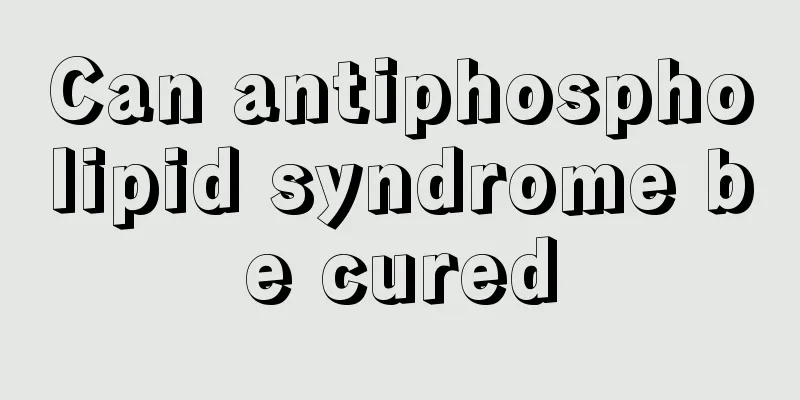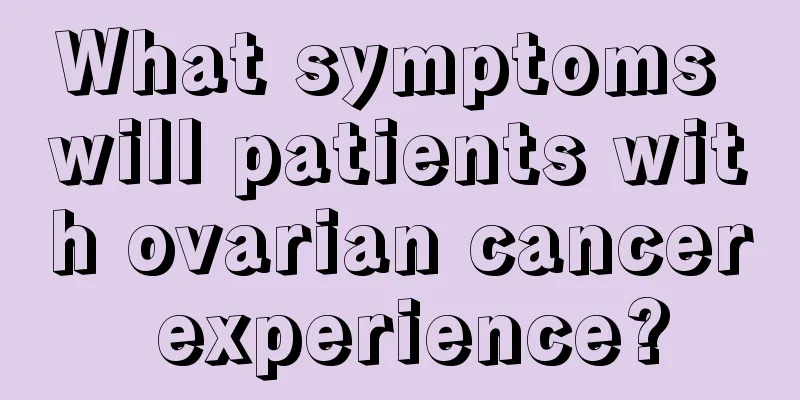Can antiphospholipid syndrome be cured

|
Many people with arterial or venous thrombosis are patients with antiphospholipid syndrome. These people have underfunctioning immune systems and are easily infected by bacteria, but can antiphospholipid syndrome be cured? There is currently data on cure, but different people have different physical conditions, so not everyone with this disease can be cured. This disease requires lifelong anticoagulant treatment, but it is difficult to treat. Antiphospholipid syndrome is a disease characterized by recurrent arterial or venous thrombosis, abnormal pregnancy and persistently positive antiphospholipid antibodies. It may be secondary to systemic lupus erythematosus or other autoimmune diseases, but may also occur alone. Regardless of whether it is primary or secondary antiphospholipid syndrome, there is no difference in its clinical manifestations and laboratory tests. The incidence rate in women is significantly higher than that in men. The treatment of antiphospholipid syndrome should be selected according to the severity of the patient's condition. If thrombosis occurs, anticoagulant and antiplatelet therapy should be selected. For patients with recurrent thrombosis, lifelong anticoagulant therapy needs to be considered. For patients with catastrophic antiphospholipid syndrome, large doses of glucocorticoids, plasma exchange and other methods should be selected for treatment. Causes Since only some patients in the APL-positive population show clinical symptoms, the occurrence of APS is also related to other factors. Studies have suggested that these antibodies can inhibit the coagulation cascade catalyzed by negatively charged phospholipids. These reactions include activation of factor X, conversion of prothrombin to thrombin, activation of protein C, and inactivation of factor Va by activated protein C. APL inhibits protein C activation or neutralizes the inactivation of factor Va, which can put the patient in a "prothrombotic state". It has been demonstrated that anti-cardiolipin antibodies (ACL) cross-react with phosphatidylserine, causing it to bind to platelets and activate platelets, which can also cause thrombosis. Other possible mechanisms include increased platelet synthesis of thromboxane, inhibition of prostacyclin synthesis, and stimulation of tissue factor production by endothelial cells. In the process of APL-mediated thrombosis, a plasma protein called β2-glycoprotein 1 (β2GP1) has attracted much attention. It is currently believed that APL can cause thrombosis by neutralizing the anticoagulant effect of β2GP1. Autoimmune APL binds to negatively charged phospholipids by binding to β2GP1 or other phospholipid-binding proteins, and is β2GP1-dependent APL. However, antiphospholipid antibodies induced by infections such as syphilis, non-syphilis spirochetes, Borrelia burgdorferi, human immunodeficiency virus (HIV), leptospira and parasites, as well as drugs and malignant tumors, can usually bind directly to phospholipids and are β2GP1-independent antibodies. |
<<: Can you still eat cherries if they turn black?
>>: Can people with nephrotic syndrome drink milk?
Recommend
Why do I have phlegm in my throat when I wake up in the morning?
There is always phlegm in the throat, which can n...
What are the benefits of massage
With the improvement of living standards, people ...
What are the causes of irregular heartbeat?
Arrhythmia is very dangerous for people, because ...
The role and efficacy of alkali powder
Alkali powder is a powdery substance. Generally s...
What causes pain after breast cancer surgery
The pain caused by the wound after surgery is con...
Disinfectant coupling agent
Disinfection coupling agent is a medical disinfec...
What is the best way to diagnose small liver cancer? There are three methods
Early detection of small liver cancer is very imp...
What causes gout? Six factors that cause gout
I believe everyone is familiar with gout. It has ...
Can snails and watermelons be eaten together
Snails have good nutritional value and are very d...
There are 6 things to pay attention to when having polycystic kidney disease
What are the precautions for polycystic kidney di...
What is small liver cancer?
Primary liver cancer is the third most common can...
Which parts of the body can lung cancer cause pain? Pay attention to these seven places
The pain caused by lung cancer is closely related...
Camellia pollen contains a variety of effective active ingredients necessary for the human body
Camellia pollen is one of the natural nutritious ...
How to treat and prevent rhinitis
Rhinitis is very troublesome for many people. Man...
What are the methods of using a foot bath
A healthy body requires maintenance. Soaking feet...









